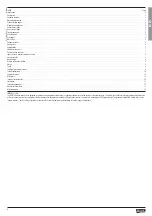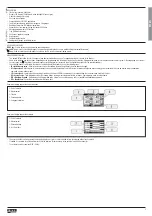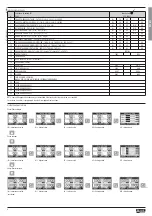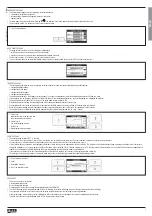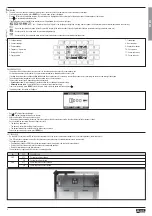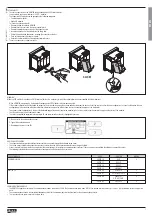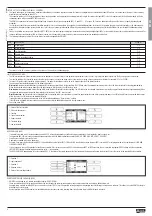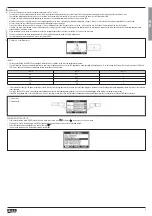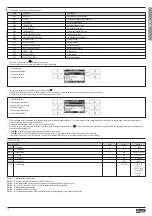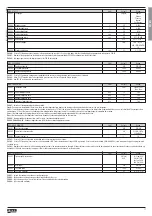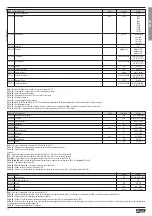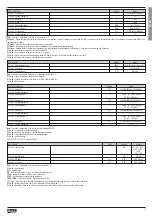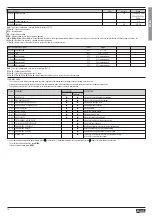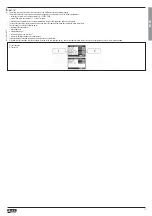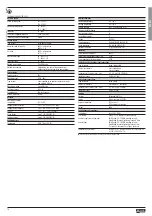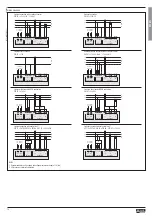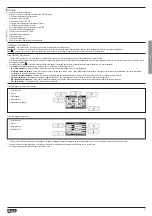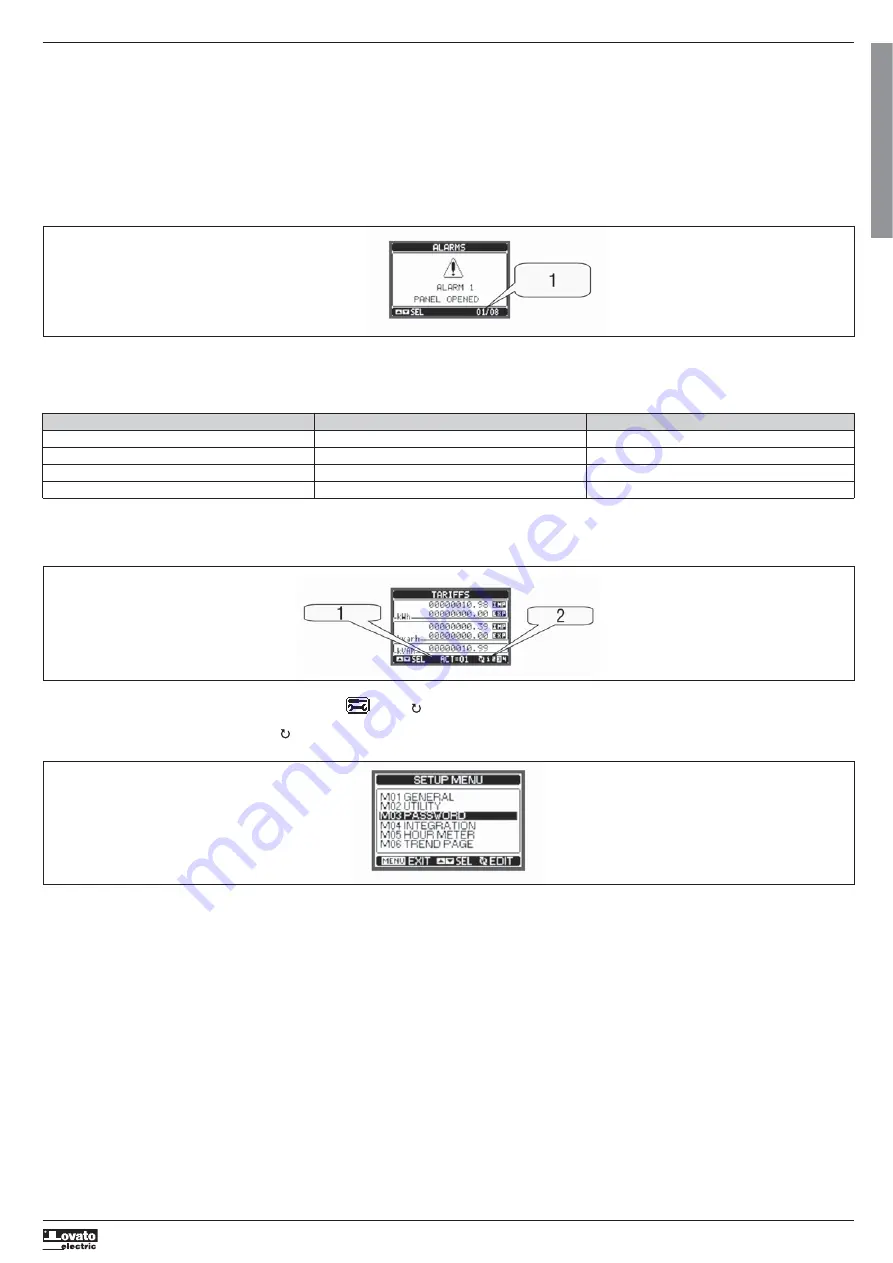
I271
I
GB
F
E
02
17
31100324
G
B
9
ALARMS (ALA)
– The user can define a maximum of 8 programmable alarms (ALA1…ALA8).
– For each alarm, it is possible to define the source that is the condition that generates the alarm, and the text of the message that must appear on the screen when this condition is met.
– The condition that generates the alarm can be, for instance, the overcoming of a threshold. In this case, the source will be one of the limit thresholds LIMx.
– If instead, the alarm must be displayed depending on the status of an external digital input, then the source will be an INPx.
– With the same criteria, it is possible to also link complex conditions to an alarm, resulting from the logic combination of inputs, limits, etc. In this case, Boolean logic variables BOOx must be used.
– For every alarm, the user can define a free message that will appear on the alarm page.
– It is also possible to define a priority for the alarm. If it is a simple indication, then the priority can be set to low. In this case the icon that follows the message will be the ‘info’ symbol.
– If instead, the alarm must indicate a more critical situation, by setting its priority to High, the message will be displayed with the warning icon, and when the alarm becomes active, the display page will move
automatically on the Alarms screen.
– When several alarms are active at the same time, they are displayed sequentially, and their total number is shown on the status bar.
– To reset one alarm that has been programmed with latch, use the dedicated command in the commands menu.
– For alarm programming and definition, refer to set-up menu M09.
TARIFFS
– For the energy billing, the DMG700 can manage 4 different tariffs in addition to the total and partial energy meters.
– The tariff selection is made by external digital inputs, and is thus conditioned by the use of an EXP expansion module provided with digital inputs. To select among the 4 tariffs, the two input functions TAR-A and
TAR-B must be used. Their binary combination selects the tariff as shown in table:
1 - Alarm no. / total alarm count
– If the synchronise input for the power integration is used, then the tariff change becomes active when the sync signal triggers it; otherwise the tariff change takes place immediately when the status of the selected
inputs changes.
– The tariffs, each with 5 meters (active energy imported/exported, reactive imported/exported, apparent) are shown on a dedicated page, following the total-partial energy screen.
– If the DMG is equipped with a communication port, then it is possible to select the active tariff through the dedicated command via Modbus protocol (see technical instruction for Modbus protocol).
TAR-A TAR-B TARIFF
OFF OFF 1
ON OFF 2
OFF ON 3
ON ON 4
1 - Active tariff
2 - Viewed tariff
PARAMETER SETTING (SET-UP)
– From normal viewing, press MENU to recall the main menu, then select icon
and press
to open the set-up menu screen.
– The display will show the table below, with the parameters grouped in sub-menus with a function-related criteria .
– Select the required menu with
keys and confirm with
.
– To quit set-up and go back to the readings viewing, press MENU.


